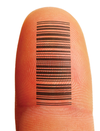Designing great tables using LaTeX
|
LaTeX not only gives you an attractive layout but also puts data and content into clear tables. The basic LaTeX configuration brings with it the tabular environment that provides all the necessary functions for creating basic tables. Adding further packages provide more professional functionality for LaTeX tables.
I will present a few among the multitude of available packages in this article. The booktabs [1] package optimizes your tables for printing. If you want color, the colortbl [2] would be the right choice. The multirow [3] package lets you merge cells in a column. If you want the calculation functions of a spreadsheet, spreadtab [4] is what you need. The tabu [5] package provides many additional table functions.
I'll demonstrate what LaTeX has to offer in tables based on an example of a study plan and an invoice. Listing 1 shows the sample code for the study plan, and Figure 1 shows the results. The code for the invoice is in Listing 2, and the results are in Figure 2.
[...]
Buy this article as PDF
Pages: 4
(incl. VAT)






